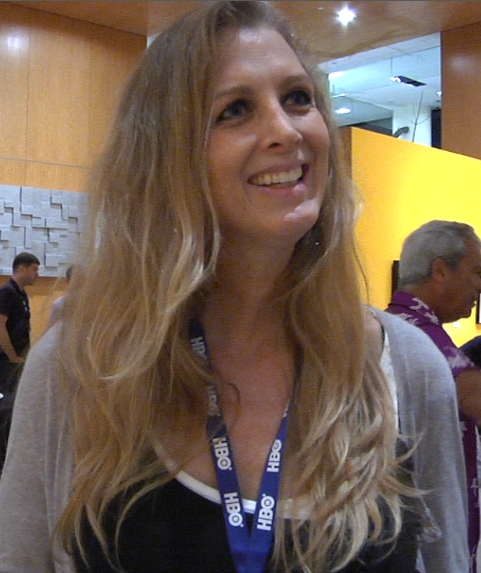 Who: Kimberly Reed is a New York-based, Montana-born filmmaker. Her documentary, Prodigal Sons charts her return to Montana on the occasion of her 20th high school reunion, and reconnecting with friends and family who knew her as ‘Paul McKerrow’, before transitioning after college to become female. The film was a critically acclaimed hit on the film festival circuit, during which time Reed was approached by filmmaker Jonathan Lee to edit a documentary about the late influential writer and speaker, Paul Goodman. Reed’s critical role during the project’s long editing process grew to that of producer by the time of its 2011 theatrical release as Paul Goodman Changed My Life. Reed’s next project is a film documenting her attempt, with fiancee Claire Jones, to get married in all of America’s 50 states — tentatively titled Fifty States of Wedlock. On the eye of her and Jones’ departure to begin filming, Camera In The Sun sat down with Reed to discuss her film work, as well as her take on how her beloved home state of Montana has been depicted in film over the years.
Who: Kimberly Reed is a New York-based, Montana-born filmmaker. Her documentary, Prodigal Sons charts her return to Montana on the occasion of her 20th high school reunion, and reconnecting with friends and family who knew her as ‘Paul McKerrow’, before transitioning after college to become female. The film was a critically acclaimed hit on the film festival circuit, during which time Reed was approached by filmmaker Jonathan Lee to edit a documentary about the late influential writer and speaker, Paul Goodman. Reed’s critical role during the project’s long editing process grew to that of producer by the time of its 2011 theatrical release as Paul Goodman Changed My Life. Reed’s next project is a film documenting her attempt, with fiancee Claire Jones, to get married in all of America’s 50 states — tentatively titled Fifty States of Wedlock. On the eye of her and Jones’ departure to begin filming, Camera In The Sun sat down with Reed to discuss her film work, as well as her take on how her beloved home state of Montana has been depicted in film over the years.
How culturally diverse was the Montanan society you grew up in?
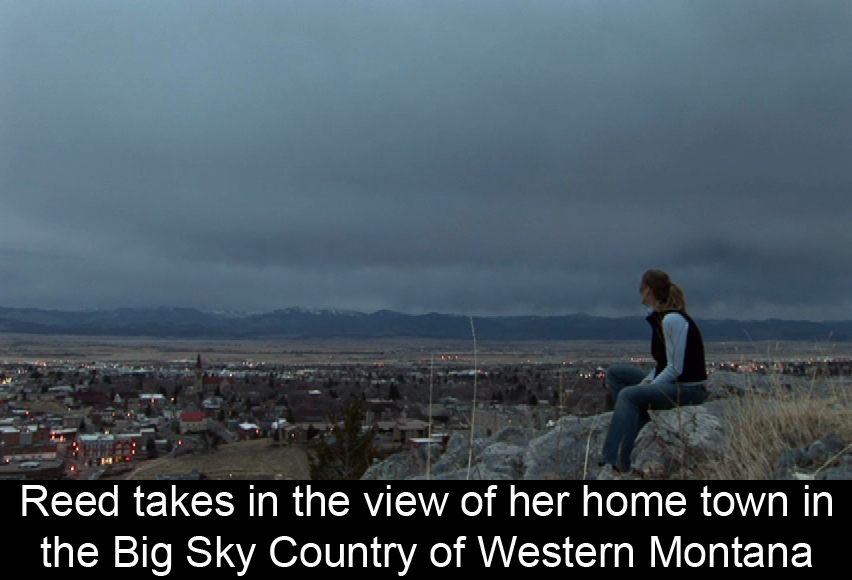 I felt like I was in a very urban setting in Montana, which meant a city of 25,000 people when I was growing up. And this is not a city of 25,000 people that’s a suburb of the big city right next door. You had to drive an hour to hit another city of the same size. And then there’s basically five or six of those in the whole state, and that’s kind of it. So, I feel very “urban” in Montana terms. And a lot of the Native American populations still center around the Nations, the reservations, so there wasn’t a lot of interaction. There was some, but it was something that you would see when you were driving from one city to another, and you would go through the reservation. But you would also see that Montana is more culturally diverse than a lot of people think it is. I go to places like Brooklyn, and it kind of reminds of these neighborhoods [in Helena] which were by-and-large populated by immigrant labor. They were either farmers or miners that were going to strike it rich in a lot of ways with a big gold rush. Helena, the capital of the state, is a gold rush town. The mythology and place names that you hear is all about the “Four Georgians” who came out, and
I felt like I was in a very urban setting in Montana, which meant a city of 25,000 people when I was growing up. And this is not a city of 25,000 people that’s a suburb of the big city right next door. You had to drive an hour to hit another city of the same size. And then there’s basically five or six of those in the whole state, and that’s kind of it. So, I feel very “urban” in Montana terms. And a lot of the Native American populations still center around the Nations, the reservations, so there wasn’t a lot of interaction. There was some, but it was something that you would see when you were driving from one city to another, and you would go through the reservation. But you would also see that Montana is more culturally diverse than a lot of people think it is. I go to places like Brooklyn, and it kind of reminds of these neighborhoods [in Helena] which were by-and-large populated by immigrant labor. They were either farmers or miners that were going to strike it rich in a lot of ways with a big gold rush. Helena, the capital of the state, is a gold rush town. The mythology and place names that you hear is all about the “Four Georgians” who came out, and 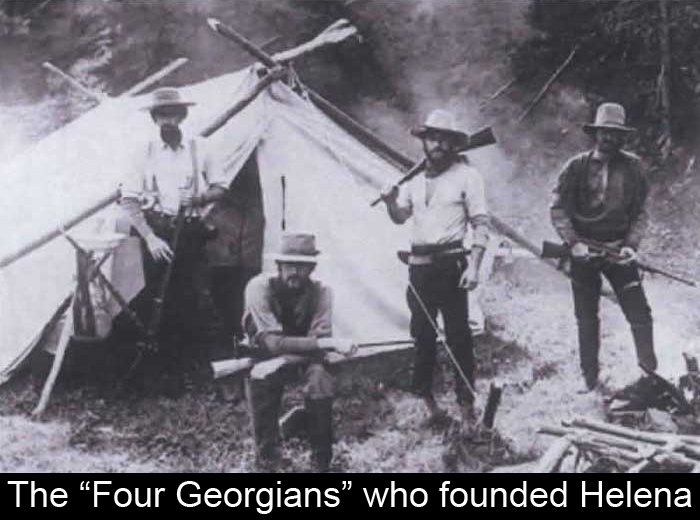 went to Last Chance Gulch. That’s our main street, because they were gonna give it one last chance and see if they could find gold. If they found it, they would stay. Then they found it, and there you go. So there was a lot of ethnic diversity from Irish and Italian and Yugoslavian miners, and there was a huge Asian population that also came to work on the railroads. So, things do get mixed up. This may be more individual, but I remember just not really having a lot of ideas about what ethnic background people had. And now that I look back, I can kind of say, “Oh wait, that guy was Peruvian,” or “Yeah, he must have been Native American,” or “Of course, there was a big strong Italian strain running through our town.” But at the time, we were this kind of washed-out American melting pot where people didn’t cling too strongly to, “My family is Swedish, and your family is German,” or “My family is Italian, and your family is Irish,” in a way that I think happens a lot more in New York. I definitely think people [in New York] identify themselves that way much more strongly.
went to Last Chance Gulch. That’s our main street, because they were gonna give it one last chance and see if they could find gold. If they found it, they would stay. Then they found it, and there you go. So there was a lot of ethnic diversity from Irish and Italian and Yugoslavian miners, and there was a huge Asian population that also came to work on the railroads. So, things do get mixed up. This may be more individual, but I remember just not really having a lot of ideas about what ethnic background people had. And now that I look back, I can kind of say, “Oh wait, that guy was Peruvian,” or “Yeah, he must have been Native American,” or “Of course, there was a big strong Italian strain running through our town.” But at the time, we were this kind of washed-out American melting pot where people didn’t cling too strongly to, “My family is Swedish, and your family is German,” or “My family is Italian, and your family is Irish,” in a way that I think happens a lot more in New York. I definitely think people [in New York] identify themselves that way much more strongly.
Do you think Montanan society is generally tolerant of transgender people like yourself?
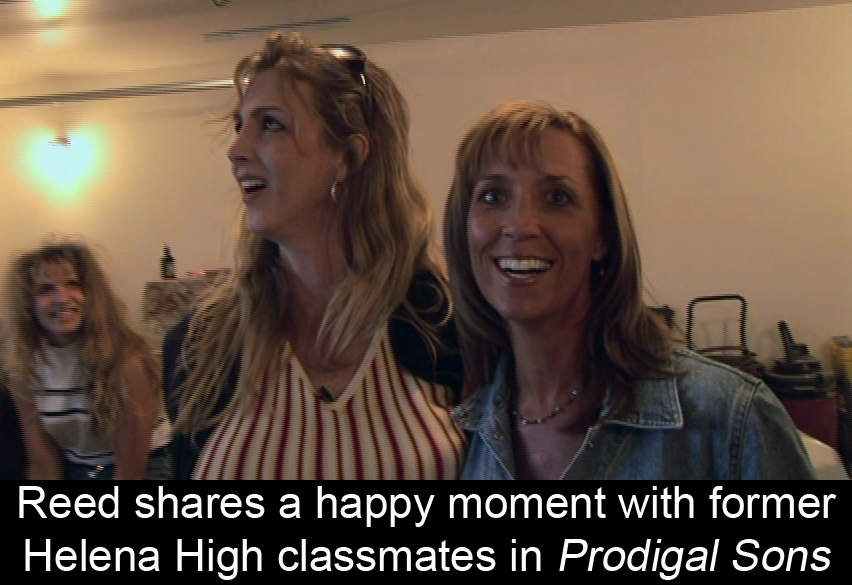 One of the comments that I often get on Prodigal Sons is this kind of mild and cautious surprise from audiences after they’ve seen the film. They say, “Wow, when you went back to Montana, everybody was pretty cool.” And I’m like, “Yeah.” That is not a really surprising thing to me. Because I know Montanans, and I think it’s maybe a quality that comes from a Mountain West thing — this sort of rugged individualism, probably coming from pioneer stock of one form or another. And with that, I think people have evolved this empathy that allows people to kind of say, “Whatever floats your boat is cool. You do that. I’ll do whatever I want to do. Just don’t tell me what to do, and I won’t tell you what to do.” I think it accounts for sort of a libertarian streak that you see in some people. And by that, I don’t mean this really far-right libertarianism. There’s just kind of like this, “You stay out of my business, and I’ll stay out of your business” sort of detente. And if you can kind of show up, and not put on a lot of airs, and just be a genuine person who’s kind of uninhibited about just saying, “Yeah,
One of the comments that I often get on Prodigal Sons is this kind of mild and cautious surprise from audiences after they’ve seen the film. They say, “Wow, when you went back to Montana, everybody was pretty cool.” And I’m like, “Yeah.” That is not a really surprising thing to me. Because I know Montanans, and I think it’s maybe a quality that comes from a Mountain West thing — this sort of rugged individualism, probably coming from pioneer stock of one form or another. And with that, I think people have evolved this empathy that allows people to kind of say, “Whatever floats your boat is cool. You do that. I’ll do whatever I want to do. Just don’t tell me what to do, and I won’t tell you what to do.” I think it accounts for sort of a libertarian streak that you see in some people. And by that, I don’t mean this really far-right libertarianism. There’s just kind of like this, “You stay out of my business, and I’ll stay out of your business” sort of detente. And if you can kind of show up, and not put on a lot of airs, and just be a genuine person who’s kind of uninhibited about just saying, “Yeah, 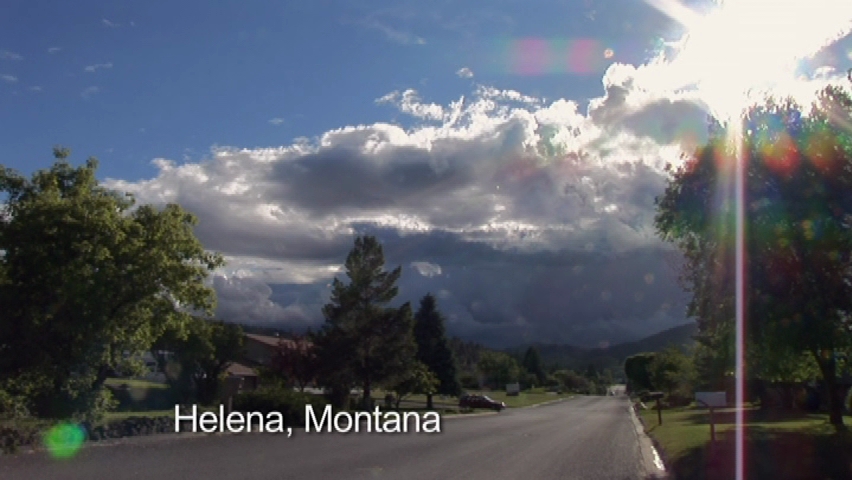 this is who I am. This is what I’m about,” then I’ve seen people in Montana and the Mountain West have a lot of understanding for that. They give you a lot of rope, to use a Western metaphor. That’s something that didn’t surprise me when I returned home in Prodigal Sons. It’s something that does surprise a lot of people, because they’re thinking, “small town in the Midwest where everybody’s whispering behind everybody else’s back, and there’s lots of cultural checks and balances just keeping an eye on everybody.” And Montanans don’t really role that way. So, I wasn’t surprised at all.
this is who I am. This is what I’m about,” then I’ve seen people in Montana and the Mountain West have a lot of understanding for that. They give you a lot of rope, to use a Western metaphor. That’s something that didn’t surprise me when I returned home in Prodigal Sons. It’s something that does surprise a lot of people, because they’re thinking, “small town in the Midwest where everybody’s whispering behind everybody else’s back, and there’s lots of cultural checks and balances just keeping an eye on everybody.” And Montanans don’t really role that way. So, I wasn’t surprised at all.
How did your childhood in Montana inspire you to become a filmmaker?
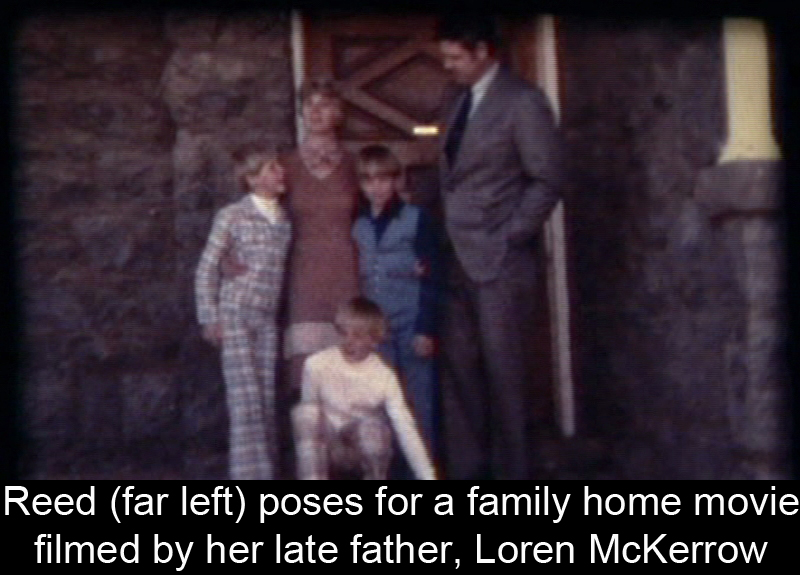 I just remember always being fascinated with film. My father was an ophthalmologist, and he always had these visual things. We would go to his office and play with the lenses — like “one or two? Better, same or worse?” That was our play. And he always had cameras. He had still cameras, and he was the first guy on the block to have a super 8, and the first guy on the block to have a video camera. One of the first things that I remember ever getting from my dad that I really wanted was a dark room. And he went out and got this really old large-format camera, so that I wouldn’t have to buy an enlarger. Because if you have a massive negative, you can just make a contact print of that. And so this whole thing of these visual systems, whether they were my father’s expensive German opthalmic equipment to examine patients, or whether it was cameras, it helped me have a pretty intuitive understanding of F-stop, and depth-of-field, and shutter speed, and how light and visual systems work.
I just remember always being fascinated with film. My father was an ophthalmologist, and he always had these visual things. We would go to his office and play with the lenses — like “one or two? Better, same or worse?” That was our play. And he always had cameras. He had still cameras, and he was the first guy on the block to have a super 8, and the first guy on the block to have a video camera. One of the first things that I remember ever getting from my dad that I really wanted was a dark room. And he went out and got this really old large-format camera, so that I wouldn’t have to buy an enlarger. Because if you have a massive negative, you can just make a contact print of that. And so this whole thing of these visual systems, whether they were my father’s expensive German opthalmic equipment to examine patients, or whether it was cameras, it helped me have a pretty intuitive understanding of F-stop, and depth-of-field, and shutter speed, and how light and visual systems work. 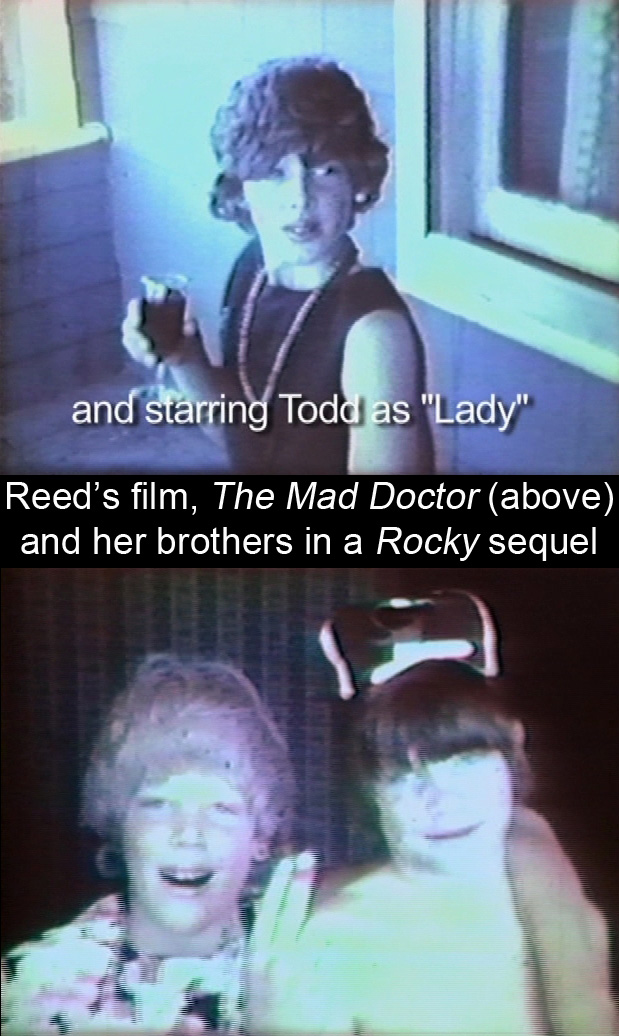 It was just something I always remember being interested in. And so when I was going to school, I don’t know how I did this, but I always used to be able to convince people that I should write a screenplay to fulfill this assignment, or I should make a movie. In seventh grade, instead of writing a report about Balboa, I made a film about Balboa discovering the New World. It was horrendous. It was a guy with a tinfoil-covered cardboard sword hacking through the brush, and finding a duck pond at the fairgrounds, and saying, “I’ve discovered the Pacific Ocean!” I don’t know how I got away with that. It was something I was always interested in, and I studied it as much as I could at whatever school I was at. So I studied that at U.C. Berkeley, and then I decided to stay in the Bay Area and go to film school there. Then when I graduated, the whole dot-com thing was going nuts in the Bay Area, and I actually had to force myself to go back and finish my film degree. Because I was already working and doing film stuff, and traveling around and making all these documentary films right out of film school. Like traveling around the world and scuba diving, and all this really cool stuff. So I caught that crest of digital video just as it was starting to happen, and that was kind of at the same time as I was transitioning. So I started working in publishing about digital filmmaking, and that was a way for me to kind of shift gears and start with a new group of people after I transitioned. It was kind of this twofold thing. I was always talking about digital filmmaking, but I kind of jumped tracks and did this. Instead of making digital films, I was writing about making digital films. That was what I needed to do to have a new community of people after I transitioned, and also to just have health insurance.
It was just something I always remember being interested in. And so when I was going to school, I don’t know how I did this, but I always used to be able to convince people that I should write a screenplay to fulfill this assignment, or I should make a movie. In seventh grade, instead of writing a report about Balboa, I made a film about Balboa discovering the New World. It was horrendous. It was a guy with a tinfoil-covered cardboard sword hacking through the brush, and finding a duck pond at the fairgrounds, and saying, “I’ve discovered the Pacific Ocean!” I don’t know how I got away with that. It was something I was always interested in, and I studied it as much as I could at whatever school I was at. So I studied that at U.C. Berkeley, and then I decided to stay in the Bay Area and go to film school there. Then when I graduated, the whole dot-com thing was going nuts in the Bay Area, and I actually had to force myself to go back and finish my film degree. Because I was already working and doing film stuff, and traveling around and making all these documentary films right out of film school. Like traveling around the world and scuba diving, and all this really cool stuff. So I caught that crest of digital video just as it was starting to happen, and that was kind of at the same time as I was transitioning. So I started working in publishing about digital filmmaking, and that was a way for me to kind of shift gears and start with a new group of people after I transitioned. It was kind of this twofold thing. I was always talking about digital filmmaking, but I kind of jumped tracks and did this. Instead of making digital films, I was writing about making digital films. That was what I needed to do to have a new community of people after I transitioned, and also to just have health insurance.
What did you think of the LGBT homecoming themes in the independent film, Big Eden?
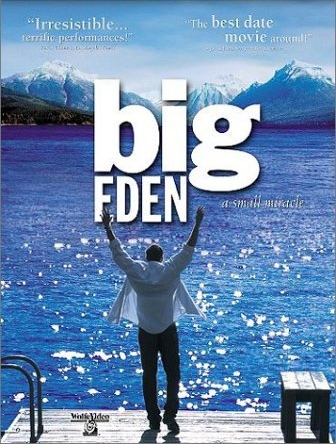 One of the things I really like about that film is how it’s a pretty similar story to mine. You’ve got this person living in New York, and they’ve got this hip New York thing going on. And all of a sudden, they go back home. The overriding questions are, “How are they going to be accepted?” and “What do they have to deal with in their past that they left behind?” Those are some common strains for the two stories. And I think that gets back to, if you grow up feeling this sense of provincialism, and then feeling like you have to get out and explore the big world out there — the flip side of that is what happens when you return home. What happens when you deal with the stuff you left behind? I think that’s a really universal theme in storytelling. I mean, that’s Odysseus, right? And as such, the thing I find really compelling about Big Eden, which is shot in a really beautiful part of Montana. And the part I’m thinking about is Lake McDonald in Glacier Park, which is one of the most beautiful spots on Earth. Just really, really gorgeous. My father used to paint, and he painted a scene of Lake Mcdonald that’s hanging by my bed. To me, that is the definition of the word, “placid,” or “calm,” or “grace.” So aside from being really gorgeous, the movie Big Eden was interesting to me. I guess at the time it came out, I was toying with, “How do I go back home? What is that gonna look like? Could it ever happen?” In Prodigal Sons, I kind of get tossed into it because of the death of my father that pulls me back — which also happens in Big Eden. His grandfather is dying, and he gets pulled back to his home town. You see what people are really made of when, not only can you go to the big city and handle it, but also revisit history, revisit where you came from, revisit all those things that maybe you weren’t ready to deal with when you left.
One of the things I really like about that film is how it’s a pretty similar story to mine. You’ve got this person living in New York, and they’ve got this hip New York thing going on. And all of a sudden, they go back home. The overriding questions are, “How are they going to be accepted?” and “What do they have to deal with in their past that they left behind?” Those are some common strains for the two stories. And I think that gets back to, if you grow up feeling this sense of provincialism, and then feeling like you have to get out and explore the big world out there — the flip side of that is what happens when you return home. What happens when you deal with the stuff you left behind? I think that’s a really universal theme in storytelling. I mean, that’s Odysseus, right? And as such, the thing I find really compelling about Big Eden, which is shot in a really beautiful part of Montana. And the part I’m thinking about is Lake McDonald in Glacier Park, which is one of the most beautiful spots on Earth. Just really, really gorgeous. My father used to paint, and he painted a scene of Lake Mcdonald that’s hanging by my bed. To me, that is the definition of the word, “placid,” or “calm,” or “grace.” So aside from being really gorgeous, the movie Big Eden was interesting to me. I guess at the time it came out, I was toying with, “How do I go back home? What is that gonna look like? Could it ever happen?” In Prodigal Sons, I kind of get tossed into it because of the death of my father that pulls me back — which also happens in Big Eden. His grandfather is dying, and he gets pulled back to his home town. You see what people are really made of when, not only can you go to the big city and handle it, but also revisit history, revisit where you came from, revisit all those things that maybe you weren’t ready to deal with when you left.
Have you read A River Runs Through It, and what did you think of the film’s version of Montana?
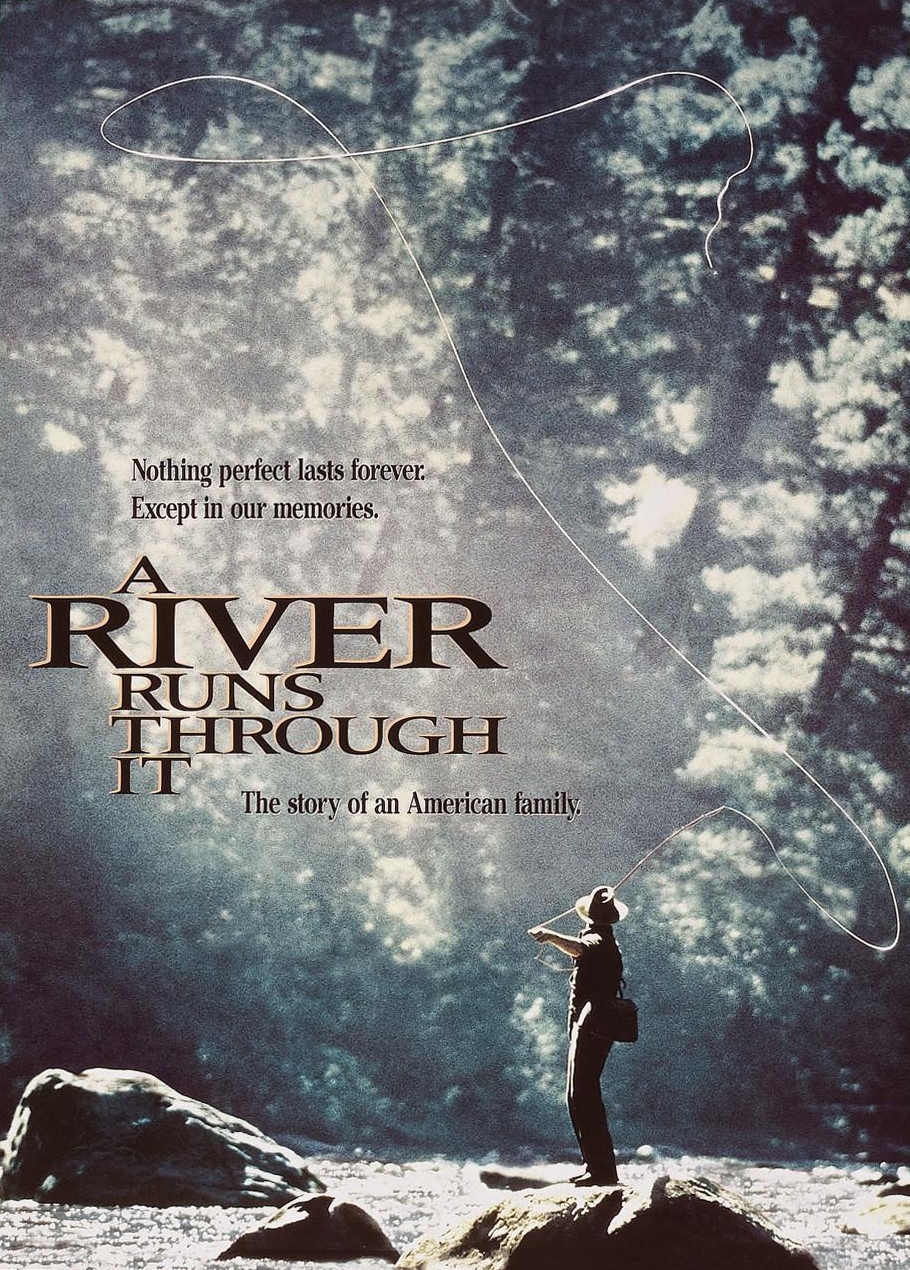 I actually haven’t read the book. I have seen the film. It’s one of those things that I always meant to read, and I think a lot of people are really familiar with it. It’s like in Travels with Charley by Steinbeck, there’s a chapter on Montana where he says something to the effect of, “For other states I have admiration, but for Montana I have a deep abiding love.” And I think Montanans are really proud of our state. There’s not a lot of us. Last time I checked, Montana had the second-smallest population, and it’s the fourth-biggest state. So hardly anybody is there in a really, really big space. And so, I think that Montanans adhere to a state identity more than people from other states. In other words, we don’t really have these city affiliations, as much as we have state affiliations. And as such, we know that book. It’s been sitting on my shelf, and I probably moved it to like eight different apartments. I just never read it, because I think I already knew it. I don’t know. I’m not a fly fisher, but I really think I understand the psychology of what comes across in that film about the father teaching the sons how to fly fish the “Presbyterian way” to a metronome — tick, tock, tick, tock. And there’s something about this very tight integration of place in spirituality, and of nature. And I don’t know quite what to call it, but I know that when it comes to Montana nature, I’m just soaked in it at such a deep level that it’s something that never leaves you. It’s something I really, really miss. I’ve lived in New York for almost twelve years now, and I need my fix. I just have to go be in the mountains, and Western Montana is just stunningly beautiful, as you can tell from that film.
I actually haven’t read the book. I have seen the film. It’s one of those things that I always meant to read, and I think a lot of people are really familiar with it. It’s like in Travels with Charley by Steinbeck, there’s a chapter on Montana where he says something to the effect of, “For other states I have admiration, but for Montana I have a deep abiding love.” And I think Montanans are really proud of our state. There’s not a lot of us. Last time I checked, Montana had the second-smallest population, and it’s the fourth-biggest state. So hardly anybody is there in a really, really big space. And so, I think that Montanans adhere to a state identity more than people from other states. In other words, we don’t really have these city affiliations, as much as we have state affiliations. And as such, we know that book. It’s been sitting on my shelf, and I probably moved it to like eight different apartments. I just never read it, because I think I already knew it. I don’t know. I’m not a fly fisher, but I really think I understand the psychology of what comes across in that film about the father teaching the sons how to fly fish the “Presbyterian way” to a metronome — tick, tock, tick, tock. And there’s something about this very tight integration of place in spirituality, and of nature. And I don’t know quite what to call it, but I know that when it comes to Montana nature, I’m just soaked in it at such a deep level that it’s something that never leaves you. It’s something I really, really miss. I’ve lived in New York for almost twelve years now, and I need my fix. I just have to go be in the mountains, and Western Montana is just stunningly beautiful, as you can tell from that film.
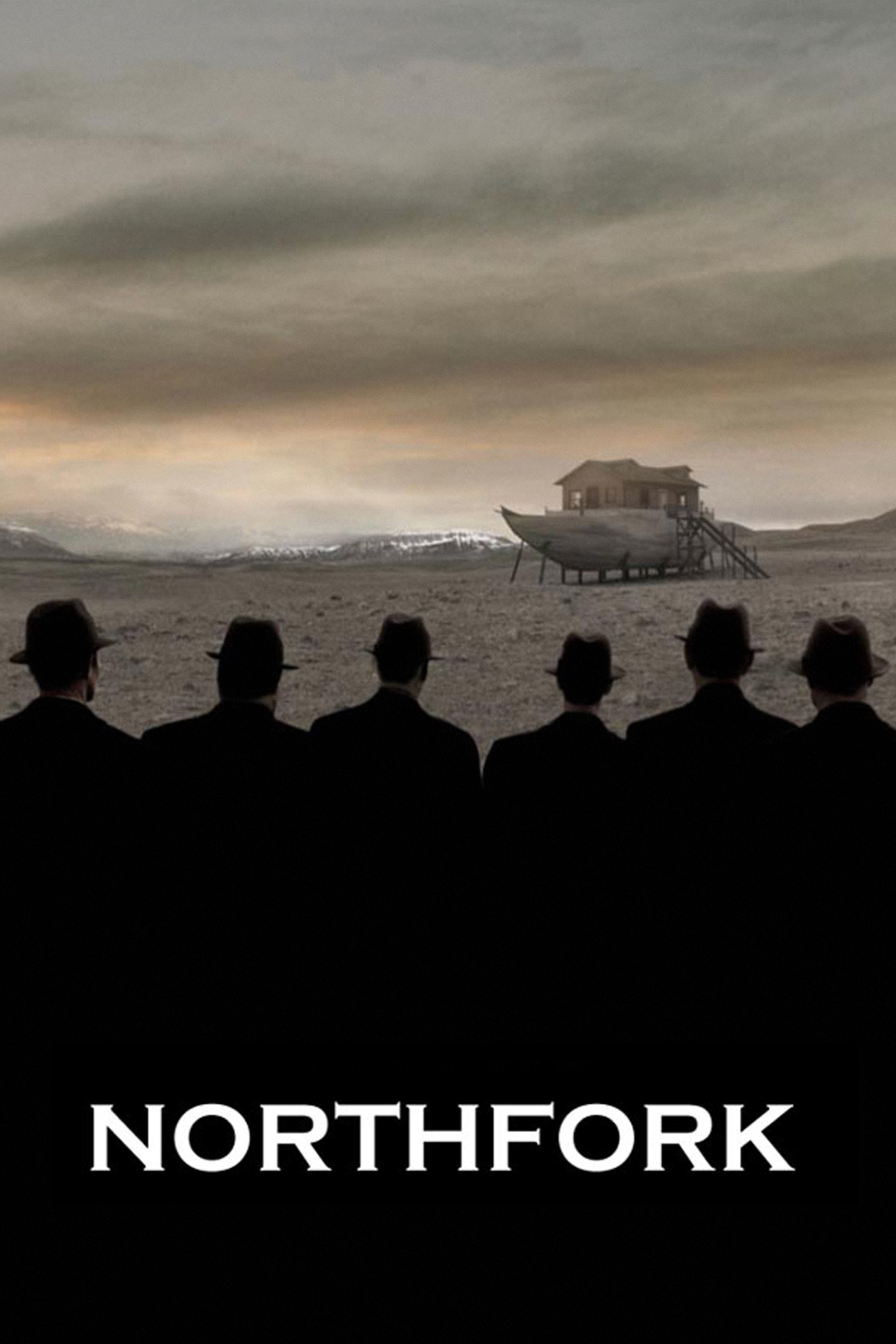 I actually haven’t seen a lot of the big major release motion pictures set in Montana, because as I was growing up, I think I was a film snob kind of right out of the gate. And if something was really big and really popular, I didn’t want to see it. We had like two movie theaters in town, which soon got reduced to one. And there were very few movies to see, and not a lot of places to see them. But I was still very selective with which ones I wanted to see, and had this antipathy towards big major release Hollywood motion pictures. So for example, I haven’t seen E.T. I think I’m the only one I know that hasn’t seen E.T. And as a filmmaker, that’s pretty ridiculous. Also, some of those big Montana films, like Thunderbolt and Lightfoot, I haven’t seen. But I know where that was shot, because people still tell stories about that being shot. It was shot in the Great Falls area, which is where in Prodigal Sons we go to the family farm. That’s in that Great Falls area. People there still tell stories about Northfork. And there’s a place called Sip-N-Dip. You go in there, and they’re very proud of the fact that they showed up in Northfork.
I actually haven’t seen a lot of the big major release motion pictures set in Montana, because as I was growing up, I think I was a film snob kind of right out of the gate. And if something was really big and really popular, I didn’t want to see it. We had like two movie theaters in town, which soon got reduced to one. And there were very few movies to see, and not a lot of places to see them. But I was still very selective with which ones I wanted to see, and had this antipathy towards big major release Hollywood motion pictures. So for example, I haven’t seen E.T. I think I’m the only one I know that hasn’t seen E.T. And as a filmmaker, that’s pretty ridiculous. Also, some of those big Montana films, like Thunderbolt and Lightfoot, I haven’t seen. But I know where that was shot, because people still tell stories about that being shot. It was shot in the Great Falls area, which is where in Prodigal Sons we go to the family farm. That’s in that Great Falls area. People there still tell stories about Northfork. And there’s a place called Sip-N-Dip. You go in there, and they’re very proud of the fact that they showed up in Northfork.
What’s your opinion on the cost/benefit of shooting Montana wolves in the film, Sweetgrass?
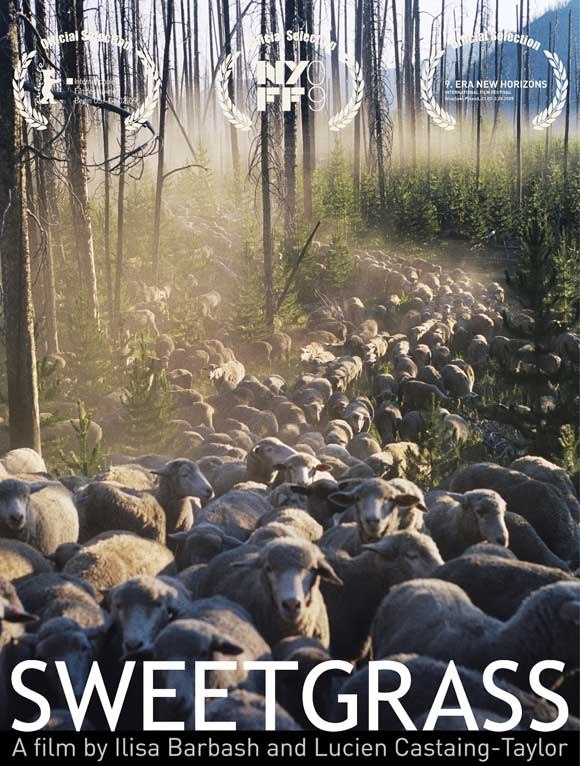 There’s two sides to me when it comes to the questions of protecting wolves, which I think is very important. If you just talked to the sort of cloistered New York recycling environmentalist lefty side of me, I’ll say, “Of course, protect the wolves. How could we shoot these beautiful creatures? Blah, blah, blah.” I could probably give you a pretty good recitation about why we need to protect that population. At the same time, I think you get a sense from Sweetgrass alone that if one sheep’s attacked, that’s a big chunk of one family’s livelihood for the year. So, you would want to do what you could to protect that. But I think where the big debate comes in is with how we are gonna do both. And there are a lot of farmers and ranchers who are very conservationist. I think there’s an interesting connection between the word “conservative” and the word “conservation.” I mean, the original conservative was Teddy Roosevelt, who was like, “This is a beautiful land. We’re gonna create a national park system to protect all of this. We need to conserve.” It’s not a progressive movement. It’s a conservative one. And as such, I can get really nostalgic and really protectionist about that. But I don’t think it needs to be a polarized argument between
There’s two sides to me when it comes to the questions of protecting wolves, which I think is very important. If you just talked to the sort of cloistered New York recycling environmentalist lefty side of me, I’ll say, “Of course, protect the wolves. How could we shoot these beautiful creatures? Blah, blah, blah.” I could probably give you a pretty good recitation about why we need to protect that population. At the same time, I think you get a sense from Sweetgrass alone that if one sheep’s attacked, that’s a big chunk of one family’s livelihood for the year. So, you would want to do what you could to protect that. But I think where the big debate comes in is with how we are gonna do both. And there are a lot of farmers and ranchers who are very conservationist. I think there’s an interesting connection between the word “conservative” and the word “conservation.” I mean, the original conservative was Teddy Roosevelt, who was like, “This is a beautiful land. We’re gonna create a national park system to protect all of this. We need to conserve.” It’s not a progressive movement. It’s a conservative one. And as such, I can get really nostalgic and really protectionist about that. But I don’t think it needs to be a polarized argument between 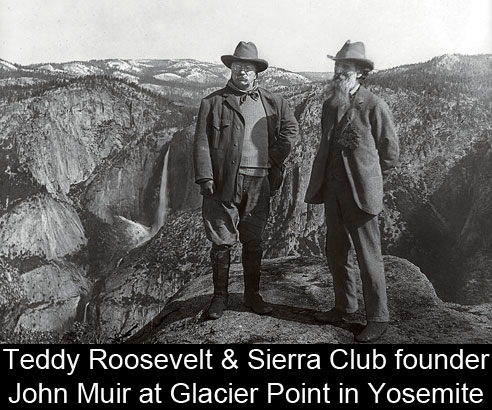 environmentalists on one side, and conservatives on the other, because it used to be flipped. It used to be that conservatives were the conservationists. And I do think there’s a way to do both. But I think it is pretty easy for a lot of us — and I include myself in this — these urban conservationists who want to go out and protect all of that other beautiful stuff out there, without really ever having lived there. In other words, I could probably theoretically support the idea of not cutting down all these trees, and just recycling paper. But for one rancher’s family to chop down their own trees, they could probably, if they had the right amount of land, chop down all the trees they wanted and sustain their family for their whole lives. I think the stuff that gets really sketchy is once you lose that idea of sustainability, and you start talking about corporate interests that are doing very greedy things that can really mess up an environment for a long, long, long time. That’s where you have to start
environmentalists on one side, and conservatives on the other, because it used to be flipped. It used to be that conservatives were the conservationists. And I do think there’s a way to do both. But I think it is pretty easy for a lot of us — and I include myself in this — these urban conservationists who want to go out and protect all of that other beautiful stuff out there, without really ever having lived there. In other words, I could probably theoretically support the idea of not cutting down all these trees, and just recycling paper. But for one rancher’s family to chop down their own trees, they could probably, if they had the right amount of land, chop down all the trees they wanted and sustain their family for their whole lives. I think the stuff that gets really sketchy is once you lose that idea of sustainability, and you start talking about corporate interests that are doing very greedy things that can really mess up an environment for a long, long, long time. That’s where you have to start 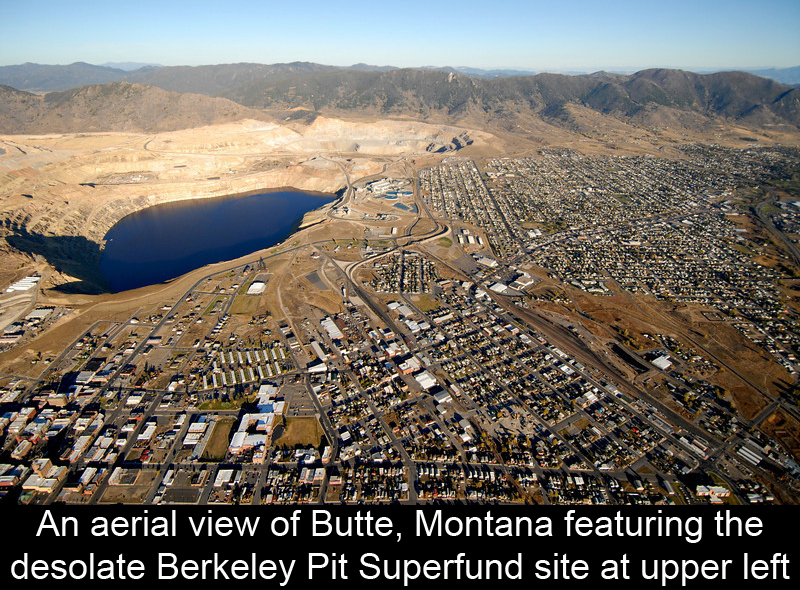 being very careful. Montana has seen a lot of exploitation by corporate interests, especially the mining interests, where you can still see the impact on Montana today. If you’re driving toward Butte, you know you’re getting close because the vegetation starts to fall away. It’s all gone once you get to Butte. And then you see the massive Berkeley Pit, which is a Superfund site. The long term effects of the mining operations there are still very, very apparent.
being very careful. Montana has seen a lot of exploitation by corporate interests, especially the mining interests, where you can still see the impact on Montana today. If you’re driving toward Butte, you know you’re getting close because the vegetation starts to fall away. It’s all gone once you get to Butte. And then you see the massive Berkeley Pit, which is a Superfund site. The long term effects of the mining operations there are still very, very apparent.
What did you think of The Slaughter Rule, and did it remind you of your own football experience.
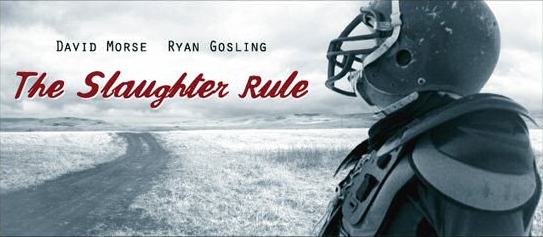 I saw The Slaughter Rule, and I loved that film. I’ve met the directors, Alex and Andrew Smith. We kind of traveled in some of the same circles. We know some of the same people. Montana’s kind of a small town, as it were. I think that they did a really a good job of capturing that world of six-man football. But I don’t really know that world very well. That’s the world that is a lot closer to my father, and where he grew up. Our family farm is in the area of Montana where they shot that. If my father had lived one or two towns over, he probably would have been playing six-man football. But he lived close enough to go into the big city, so he ran the full eleven-man team. I think it was very natural for me to fall into that sport as an activity, because it’s kind of the only game in town, literally. A film I really adore is
I saw The Slaughter Rule, and I loved that film. I’ve met the directors, Alex and Andrew Smith. We kind of traveled in some of the same circles. We know some of the same people. Montana’s kind of a small town, as it were. I think that they did a really a good job of capturing that world of six-man football. But I don’t really know that world very well. That’s the world that is a lot closer to my father, and where he grew up. Our family farm is in the area of Montana where they shot that. If my father had lived one or two towns over, he probably would have been playing six-man football. But he lived close enough to go into the big city, so he ran the full eleven-man team. I think it was very natural for me to fall into that sport as an activity, because it’s kind of the only game in town, literally. A film I really adore is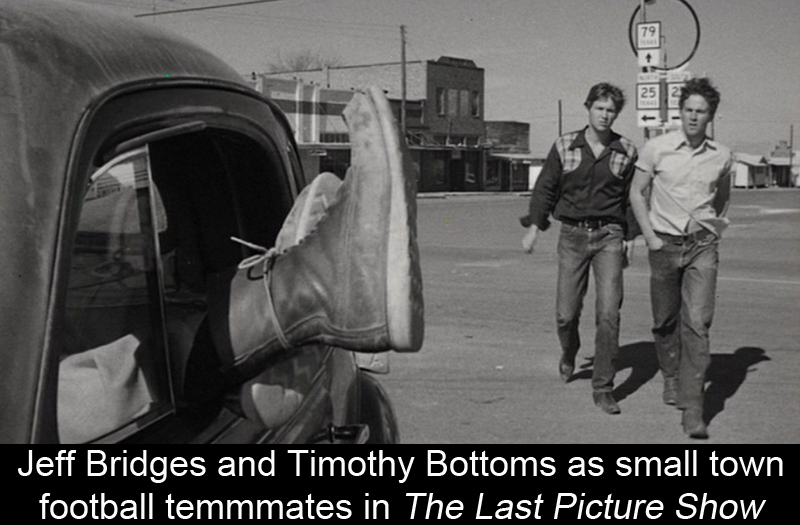 The Last Picture Show. I find it just absolutely hilarious and kind of painfully funny how basically the first reel of that film is all about the local football team being ostracized by all of the people in town, because they played so poorly that weekend. Everybody knew exactly who did what, and who did what good, and who did what bad. They lost, and they’re shamed by the townspeople, who are full of all sorts of advice about how they would have done it when they were in high school. It’s really important. There’s a lot of focus on it, and it gets a lot of coverage. I think that for me, I was working on all these identity issues of gender, and trying to figure how I fit in to all of that. So having that masculinity challenged made it really an easy root for me to jump into the one thing where I could hopefully prove that there
The Last Picture Show. I find it just absolutely hilarious and kind of painfully funny how basically the first reel of that film is all about the local football team being ostracized by all of the people in town, because they played so poorly that weekend. Everybody knew exactly who did what, and who did what good, and who did what bad. They lost, and they’re shamed by the townspeople, who are full of all sorts of advice about how they would have done it when they were in high school. It’s really important. There’s a lot of focus on it, and it gets a lot of coverage. I think that for me, I was working on all these identity issues of gender, and trying to figure how I fit in to all of that. So having that masculinity challenged made it really an easy root for me to jump into the one thing where I could hopefully prove that there 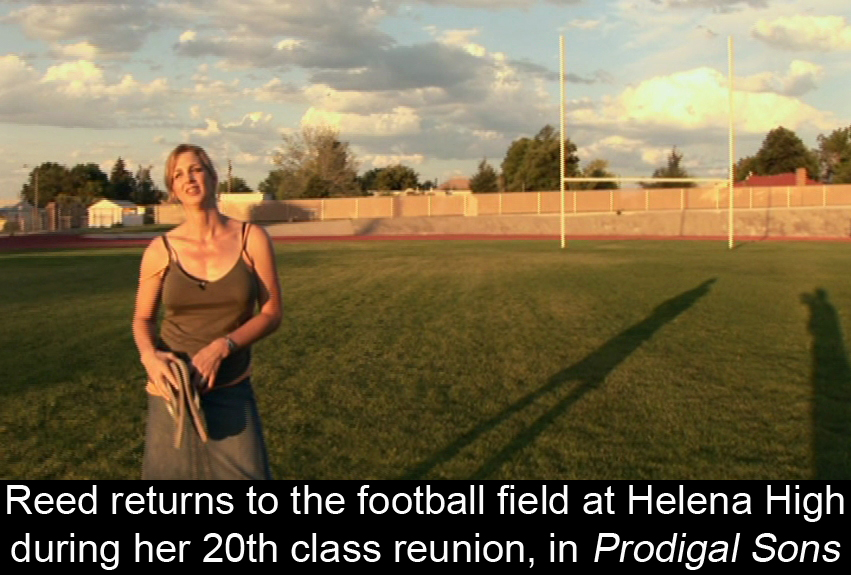 wasn’t something wrong with me, prove that I wasn’t different, prove that I could actually fit in. So I think the importance of that game, not just in Montana, but I think in a lot of smaller towns, it’s kind of hard to overstate it. It’s really a big cultural event. I always know how my old high school team is doing, how the cross-town rivals are doing, and there’s a college in our hometown too. And my mom is very well-updated on that, because she totally follows all of it. She’s on top of everything. And with The Slaughter Rule, the way that Alex and Andrew Smith captured that world, they just did a magnificent job. I think everyone knows who Ryan Gosling is now. And the real breakout role that most people would say for Ryan Gosling was The Believer. But I think that
wasn’t something wrong with me, prove that I wasn’t different, prove that I could actually fit in. So I think the importance of that game, not just in Montana, but I think in a lot of smaller towns, it’s kind of hard to overstate it. It’s really a big cultural event. I always know how my old high school team is doing, how the cross-town rivals are doing, and there’s a college in our hometown too. And my mom is very well-updated on that, because she totally follows all of it. She’s on top of everything. And with The Slaughter Rule, the way that Alex and Andrew Smith captured that world, they just did a magnificent job. I think everyone knows who Ryan Gosling is now. And the real breakout role that most people would say for Ryan Gosling was The Believer. But I think that 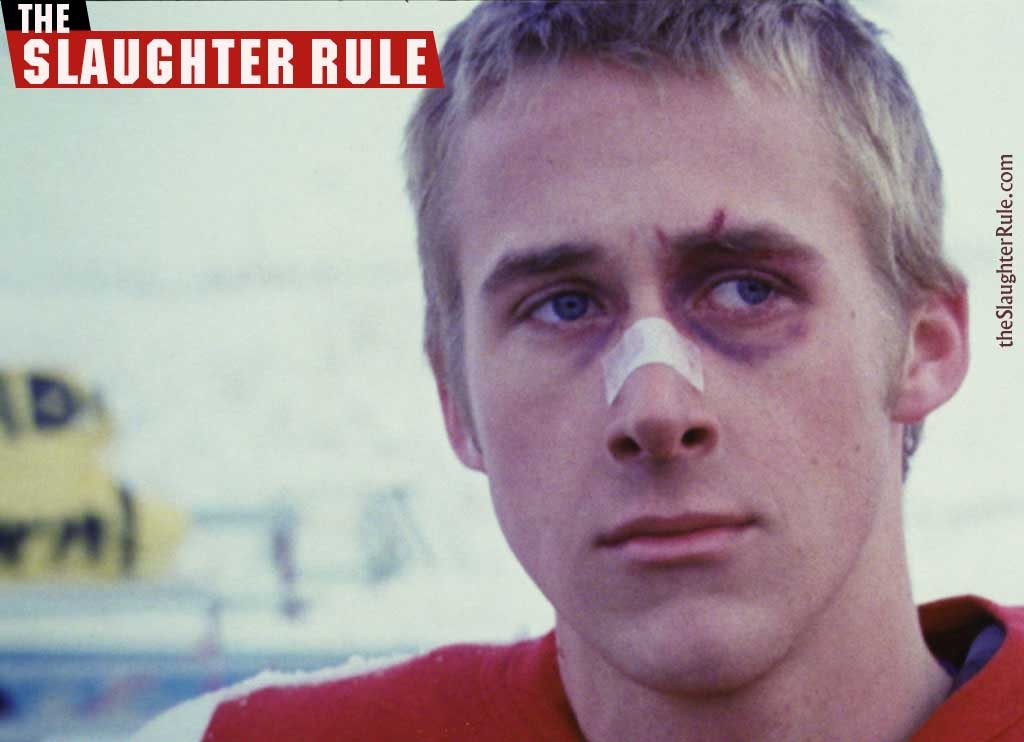 they were actually shooting right next to each other, and Alex and Andrew cast him in their film before The Believer. There was something like they shot first, but the other was released first. Anyway, it was a very close call about what his first film was, and I always felt they should have gotten credit for discovering Ryan Gosling, who everybody knows now. That’s a powerful film, and a really powerful performance. It’s also a bleak world they portray in that film. I mean, it’s called The Slaughter Rule.
they were actually shooting right next to each other, and Alex and Andrew cast him in their film before The Believer. There was something like they shot first, but the other was released first. Anyway, it was a very close call about what his first film was, and I always felt they should have gotten credit for discovering Ryan Gosling, who everybody knows now. That’s a powerful film, and a really powerful performance. It’s also a bleak world they portray in that film. I mean, it’s called The Slaughter Rule.
What is your favorite film that was shot in the Montana region?
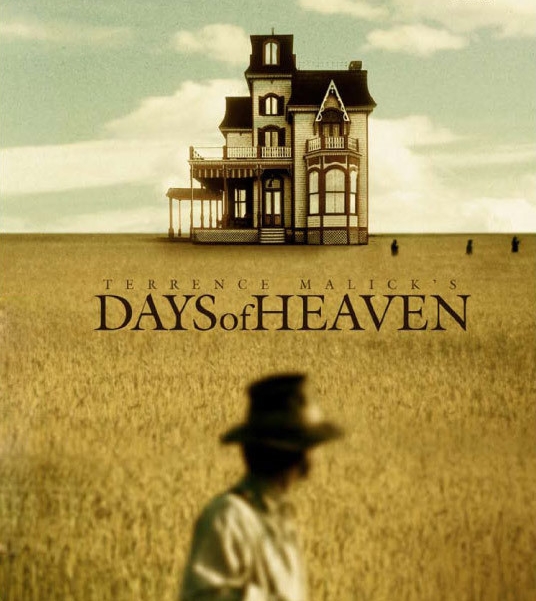 I don’t know if I can really call this a Montana film, but I think of it that way because it’s so close. Terrence Malick’s Days of Heaven was actually shot just over the border. It reminds me of the country where our family farm is, which again is just really, really beautiful. A lot of the reason for that too is that it’s a period piece that was shot at a time when all of the wheat harvesting was done manually. And the old photos at our family farm have those same machines, and people picking up big sheaves of wheat, and either threshing it themselves or tossing it into a mechanical thresher. And so, I think of that as a very Montana film.
I don’t know if I can really call this a Montana film, but I think of it that way because it’s so close. Terrence Malick’s Days of Heaven was actually shot just over the border. It reminds me of the country where our family farm is, which again is just really, really beautiful. A lot of the reason for that too is that it’s a period piece that was shot at a time when all of the wheat harvesting was done manually. And the old photos at our family farm have those same machines, and people picking up big sheaves of wheat, and either threshing it themselves or tossing it into a mechanical thresher. And so, I think of that as a very Montana film.
Rosco makes gels, makes a lot of expendables that you put in front of lights. Rosco used to make like a “Scandinavian collection,” or a “Sven Nykvist collection” of gels that would emulate this softer light coming from northern climes. And I found that interesting, because the light is really, really different. The reason is that as the sun approaches the horizon, it’s at a much gentler angle, and sets slower, so that your golden hour is longer. When that happens, you have a much longer period where the sun is being filtered through lots of extra layers of atmosphere, which softens the light. It makes the 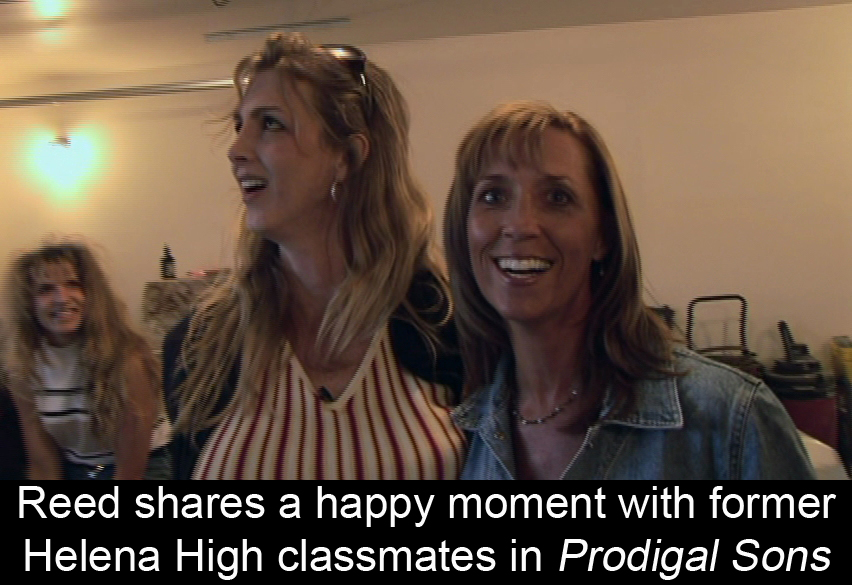 light wrap around people’s faces much more in a way that’s really, really beautiful. I mean, when I think of Days of Heaven, I think of the light wrapping around Richard Gere’s face in some of the close-ups. As a filmmaker, I find it hard to imagine a film that isn’t shot in Montana. I mean, this is how deeply that place is rooted with me. And a lot of times I have to kind of shift gears and put it in some other place, because I know that it’s just not feasible to shoot it there at this time or place. But that’s how I think of these shots. In other words, almost to go back where we started, place is almost inseparable from story when I think about films like these.
light wrap around people’s faces much more in a way that’s really, really beautiful. I mean, when I think of Days of Heaven, I think of the light wrapping around Richard Gere’s face in some of the close-ups. As a filmmaker, I find it hard to imagine a film that isn’t shot in Montana. I mean, this is how deeply that place is rooted with me. And a lot of times I have to kind of shift gears and put it in some other place, because I know that it’s just not feasible to shoot it there at this time or place. But that’s how I think of these shots. In other words, almost to go back where we started, place is almost inseparable from story when I think about films like these.
What were the challenges of editing Paul Goodman Changed My Life, and then selling it abroad?
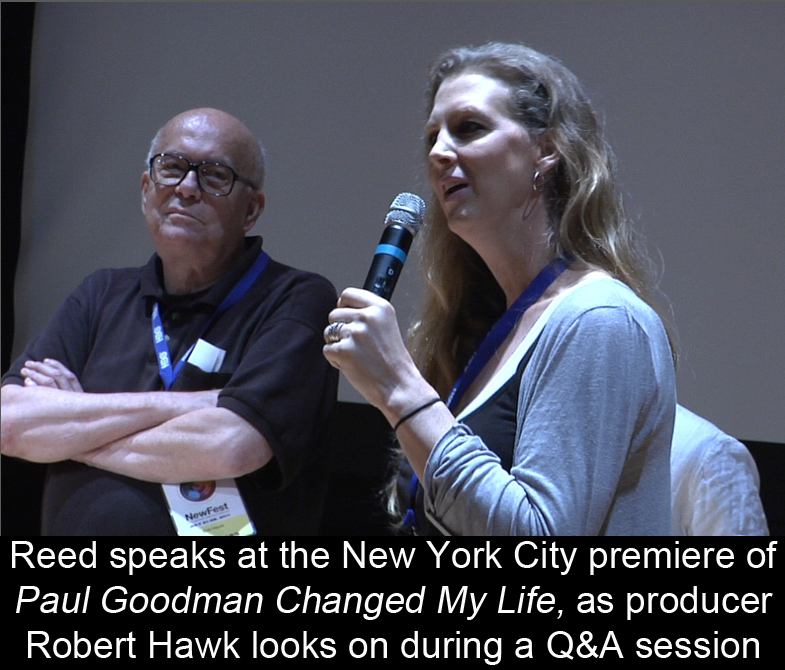 The film Paul Goodman Changed My Life is something that the director Jonathan Lee, he originally came to me as an editor, and wanted me to cut a short fundraising trailer. And I did that, and then he asked me to edit the whole film. And it’s one of those projects where I just kept doing more and more and more. And it was Jonathan’s first feature, so I was able to guide him through some of the stages that need to happen when you’re editing and releasing a film. So I ended up ultimately editing and producing, and getting a writing credit on the film too. You know, the relationship between a director and an editor on a non-fiction film can take a lot of different forms. Sometimes the director can be very explicit about what they want. Sometimes there’s just a ton of leeway. And that’s how this film was. I just kind of ran with it, and all of this was taking place as I was on the road for Prodigal Sons. So I would travel two or three weeks out of the month, and then I’d come home and edit furiously on this, and then go back out. That kind of hectic life was a very big compliment, because I think we ended up doing over 100 film festivals with Prodigal Sons. So, there
The film Paul Goodman Changed My Life is something that the director Jonathan Lee, he originally came to me as an editor, and wanted me to cut a short fundraising trailer. And I did that, and then he asked me to edit the whole film. And it’s one of those projects where I just kept doing more and more and more. And it was Jonathan’s first feature, so I was able to guide him through some of the stages that need to happen when you’re editing and releasing a film. So I ended up ultimately editing and producing, and getting a writing credit on the film too. You know, the relationship between a director and an editor on a non-fiction film can take a lot of different forms. Sometimes the director can be very explicit about what they want. Sometimes there’s just a ton of leeway. And that’s how this film was. I just kind of ran with it, and all of this was taking place as I was on the road for Prodigal Sons. So I would travel two or three weeks out of the month, and then I’d come home and edit furiously on this, and then go back out. That kind of hectic life was a very big compliment, because I think we ended up doing over 100 film festivals with Prodigal Sons. So, there 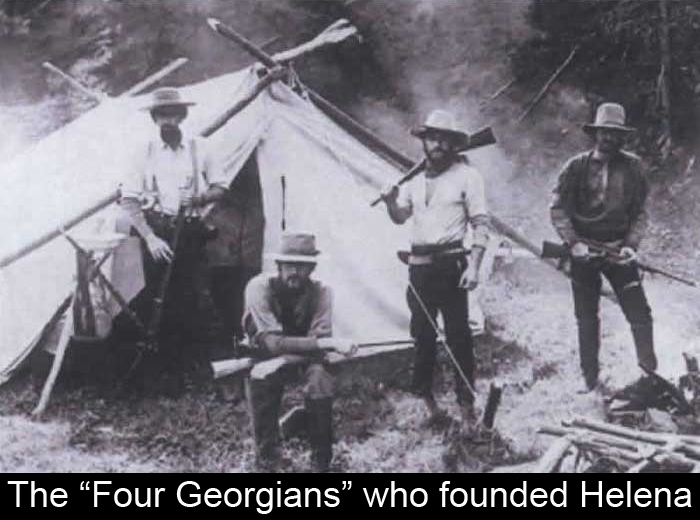 was a lot of travel involved. And editing Paul Goodman Changed My Life was a pretty steep climb, because if you think about it, a lot of the biopics that come out are about people who you already know who they are. And you’re probably going because you’re especially interested in learning a little bit more about this person who you already find interesting. But with Paul Goodman, the challenge was that he had really been forgotten, and had really fallen out of the public conversation. Very few people actually knew who he was. I mean, people would ask what I was working on, and I would tell them, and I almost always had to kind of make the case for who this guy was. I’d explain what influence he had, and every once in a while I got a person who said, “Oh yeah! I always wondered what happened to him. He was enormously influential, and then he just disappeared.” So in editing this film, we had to first explain who this guy was, before we could explore him even further. Now on top of that, it was a steep climb in the edit because the stuff that he was involved in are pretty complex intellectual ideas that come from a really wide swath of intellectual history. So in other words, this guy was not easily pigeonholed, and that’s what made him interesting. It also makes him hard to talk about. It also, in large part, accounts for why he’s really disappeared from the public conversation.
was a lot of travel involved. And editing Paul Goodman Changed My Life was a pretty steep climb, because if you think about it, a lot of the biopics that come out are about people who you already know who they are. And you’re probably going because you’re especially interested in learning a little bit more about this person who you already find interesting. But with Paul Goodman, the challenge was that he had really been forgotten, and had really fallen out of the public conversation. Very few people actually knew who he was. I mean, people would ask what I was working on, and I would tell them, and I almost always had to kind of make the case for who this guy was. I’d explain what influence he had, and every once in a while I got a person who said, “Oh yeah! I always wondered what happened to him. He was enormously influential, and then he just disappeared.” So in editing this film, we had to first explain who this guy was, before we could explore him even further. Now on top of that, it was a steep climb in the edit because the stuff that he was involved in are pretty complex intellectual ideas that come from a really wide swath of intellectual history. So in other words, this guy was not easily pigeonholed, and that’s what made him interesting. It also makes him hard to talk about. It also, in large part, accounts for why he’s really disappeared from the public conversation. 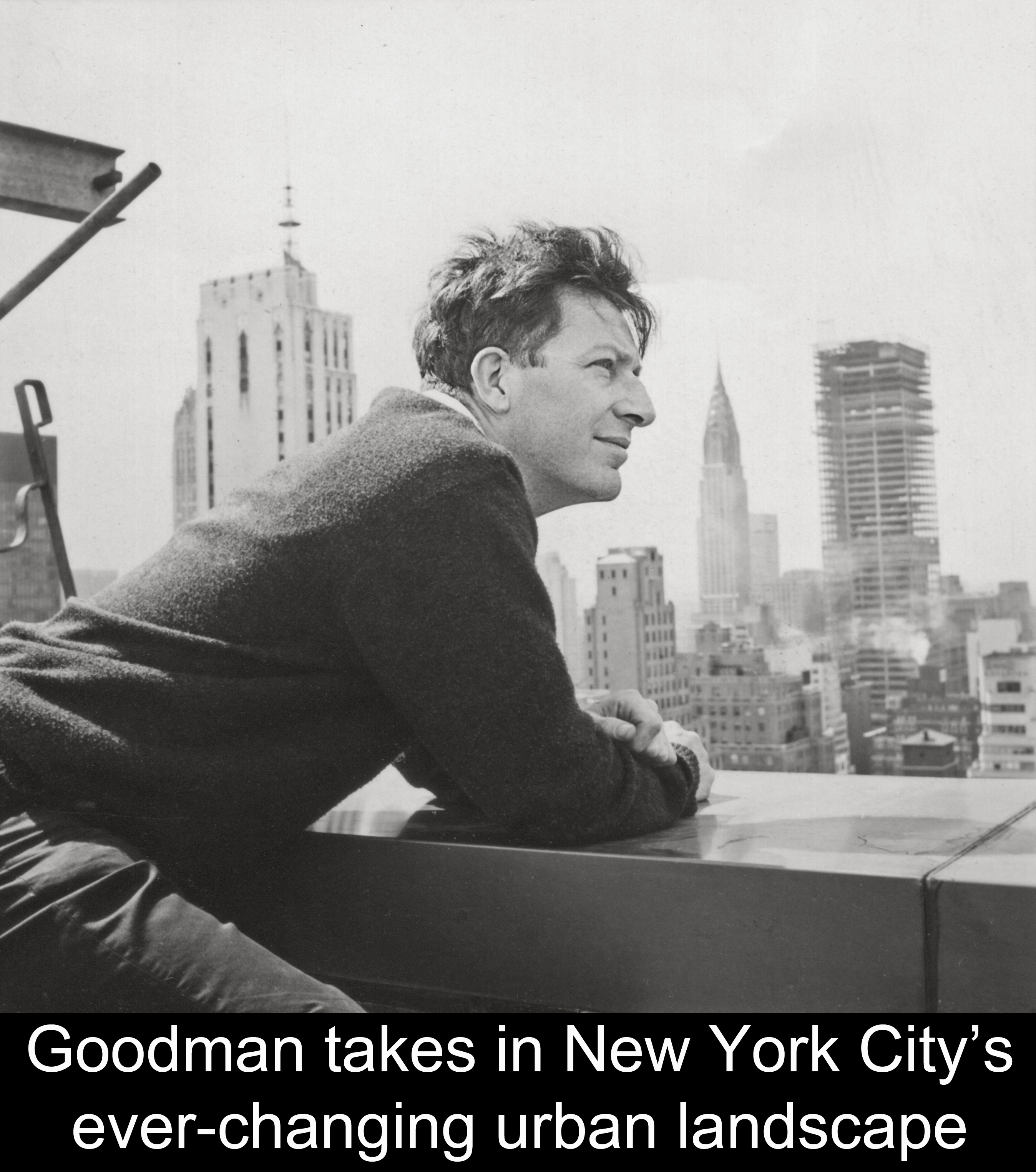 Because you couldn’t really slot him into, “Oh, he’s a great this,” or “He’s the best known that.” He was a poet. He was a novelist. He wrote the founding text for Gestalt therapy. He jumps over, and then writes one of the founding texts for Utopian community urban design with his brother. So this guy, you couldn’t really coast along and assume that people knew anything. You kind of had to introduce, and then explore, and then totally shift gears into this other thing where you introduce and then explore. On top of everything else, he was openly gay in the ’40’s and ’50’s and ’60’s, which made him just a really kind of curious and enigmatic person. So he’s a really great character, and it was a lot of fun to explore. But there’s a lot jammed into that film, and hopefully in a really lyrical and fun way, because that’s how he really was.
Because you couldn’t really slot him into, “Oh, he’s a great this,” or “He’s the best known that.” He was a poet. He was a novelist. He wrote the founding text for Gestalt therapy. He jumps over, and then writes one of the founding texts for Utopian community urban design with his brother. So this guy, you couldn’t really coast along and assume that people knew anything. You kind of had to introduce, and then explore, and then totally shift gears into this other thing where you introduce and then explore. On top of everything else, he was openly gay in the ’40’s and ’50’s and ’60’s, which made him just a really kind of curious and enigmatic person. So he’s a really great character, and it was a lot of fun to explore. But there’s a lot jammed into that film, and hopefully in a really lyrical and fun way, because that’s how he really was.
For documentary films over the last couple of years, there has been a big reduction in the number of feature film slots that exist for broadcast outlets around the world. And almost all of those have been cut down to 60-minute slots. So instead of being able to sit down and watch your hour-and-a-half 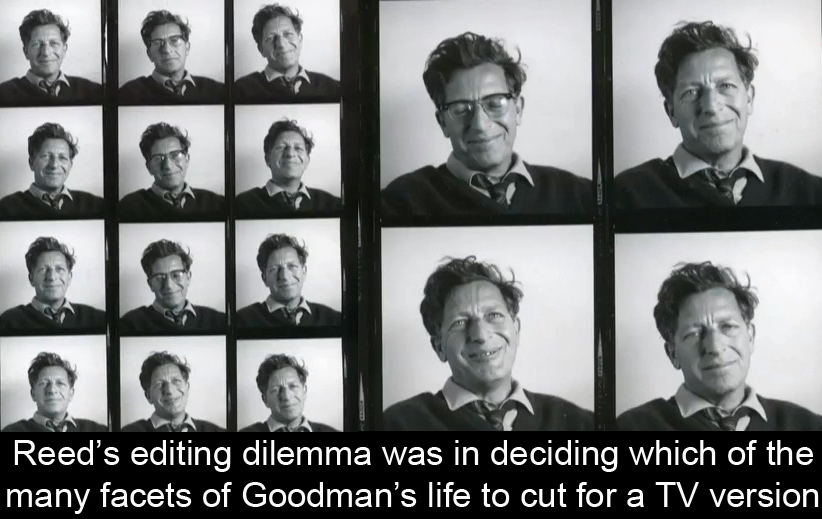 long feature on the Swedish version of PBS, there’s many more 60-minute slots. So if you’re gonna sell a documentary for broadcast overseas, you almost always have to cut it down to 60 minutes. So taking this complicated portrait, with how compressed it already is, and then cutting out a third of that — cutting it from 90 down to 60 — it’s an even steeper climb. But we were kind of helped by some things that had more resonance in America, than they did in other countries. There were some sections, like in Gestalt therapy for example, where we really felt like there was a greater understanding of it in the local cultures. So we didn’t have to ramp that up as much in Germany as we did here, for example.
long feature on the Swedish version of PBS, there’s many more 60-minute slots. So if you’re gonna sell a documentary for broadcast overseas, you almost always have to cut it down to 60 minutes. So taking this complicated portrait, with how compressed it already is, and then cutting out a third of that — cutting it from 90 down to 60 — it’s an even steeper climb. But we were kind of helped by some things that had more resonance in America, than they did in other countries. There were some sections, like in Gestalt therapy for example, where we really felt like there was a greater understanding of it in the local cultures. So we didn’t have to ramp that up as much in Germany as we did here, for example. 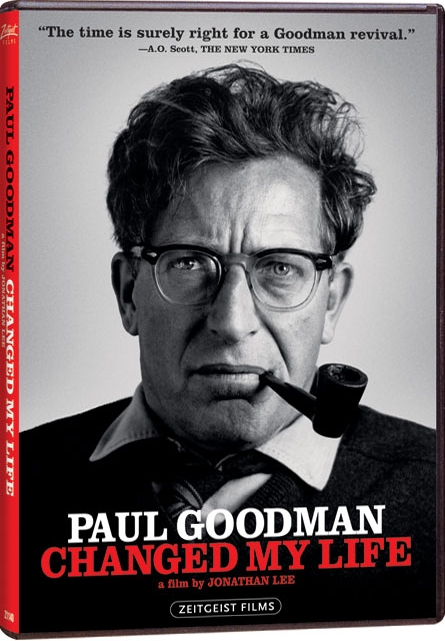 Now, you can really cut a different version for every country, but you’d soon go insane. But you just try to find the best sweet spot that’s gonna satisfy the most countries. The market for that is still, by and large, Western Europe and then other English-speaking countries like Australia. But that world is changing quite a bit. It used to be that was really one of the few places that documentary filmmakers could make back some of their money, was overseas broadcast. And the amount that a lot of those broadcast outlets are paying has really dropped. I also think that in general, even though the costs of production are getting lower, the amount that you get reimbursed for that for broadcast licensing overseas has fallen right along with that. The long cut of Paul Goodman is 90 minutes, and that’s gonna be the version that comes out on Zeitgeist Films’ release of the DVD.
Now, you can really cut a different version for every country, but you’d soon go insane. But you just try to find the best sweet spot that’s gonna satisfy the most countries. The market for that is still, by and large, Western Europe and then other English-speaking countries like Australia. But that world is changing quite a bit. It used to be that was really one of the few places that documentary filmmakers could make back some of their money, was overseas broadcast. And the amount that a lot of those broadcast outlets are paying has really dropped. I also think that in general, even though the costs of production are getting lower, the amount that you get reimbursed for that for broadcast licensing overseas has fallen right along with that. The long cut of Paul Goodman is 90 minutes, and that’s gonna be the version that comes out on Zeitgeist Films’ release of the DVD.
[Note: That DVD can be ordered at the Zeitgeist site]
What will be the focus of your next documentary?
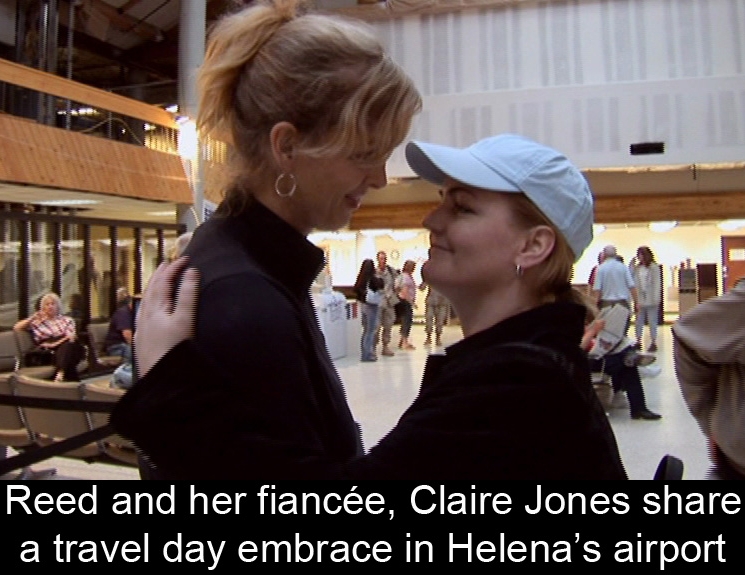 The next project that I’m working on is tentatively titled Fifty States of Wedlock. And in it is my partner Claire, who I’ve been together with for 12 years. We recently got engaged, and we decided that we really wanted to make a statement with our being engaged. And a lot of people are familiar with the fact that marriage laws change from state to state, in terms of whether a state allows same-sex marriage. The other thing that changes from state to state, that not a lot of people realize, is the way in which a state determines what my legal sex is. Now, the only thing that your legal sex really matters for is for your ability to enter into a marriage contract. And so, what that means is Claire and I can go to one state and get married as a same-sex couple. We can cross a state line, enter a state that does not allow same-sex marriage, and depending on what that state is, and how they determine my legal sex, we may or may not be able to get married as a same-sex couple. We may or may not be able to get married as an opposite-sex couple. Some of the states look at my drivers license, and some look at my passport. Some only look at my birth certificate.
The next project that I’m working on is tentatively titled Fifty States of Wedlock. And in it is my partner Claire, who I’ve been together with for 12 years. We recently got engaged, and we decided that we really wanted to make a statement with our being engaged. And a lot of people are familiar with the fact that marriage laws change from state to state, in terms of whether a state allows same-sex marriage. The other thing that changes from state to state, that not a lot of people realize, is the way in which a state determines what my legal sex is. Now, the only thing that your legal sex really matters for is for your ability to enter into a marriage contract. And so, what that means is Claire and I can go to one state and get married as a same-sex couple. We can cross a state line, enter a state that does not allow same-sex marriage, and depending on what that state is, and how they determine my legal sex, we may or may not be able to get married as a same-sex couple. We may or may not be able to get married as an opposite-sex couple. Some of the states look at my drivers license, and some look at my passport. Some only look at my birth certificate. 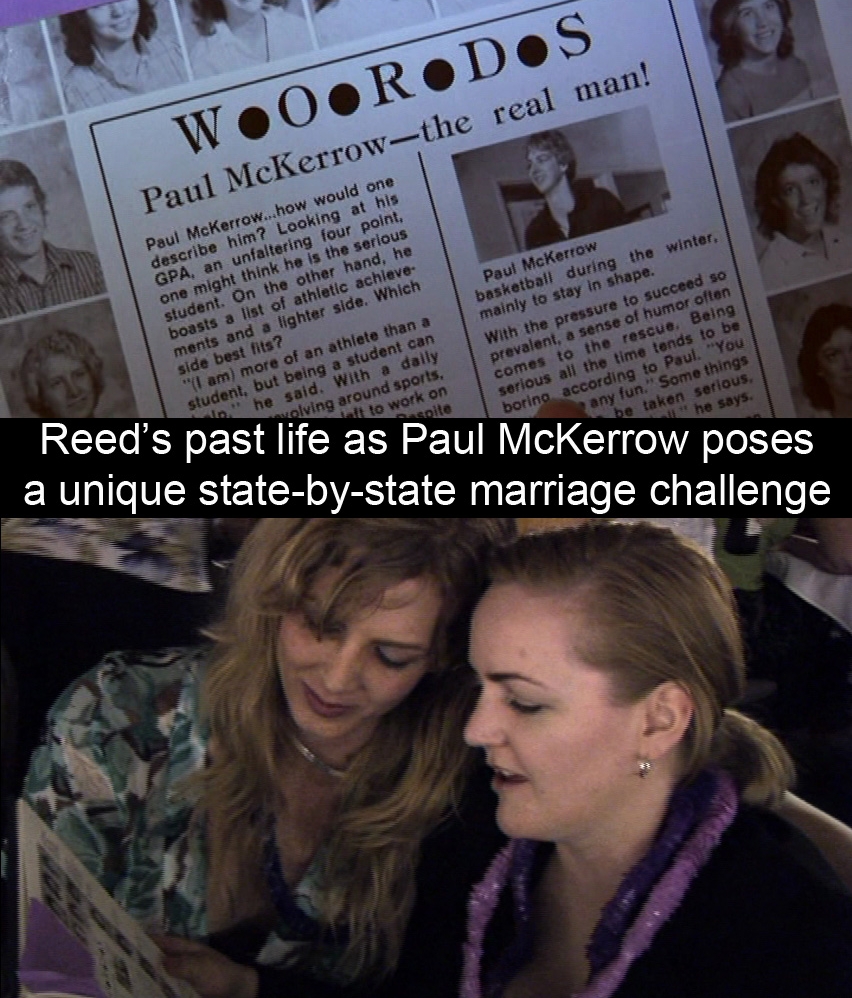 Some states allow one who was born there to amend their birth certificate, and some states don’t. You can never amend it. You’re stuck with that. Some states, and these are the really interesting ones, have decided that none of that i.d. stuff matters. They say if you were born with XY chromosomes, then you are and will always be male, no matter what you do. You can’t ever change your sex. So one of the first places that Claire and I decided to go to is Texas, which is where they had a decision like this, saying that I legally could never change my sex. Which means, of course, that I can go there with my same-sex partner, and they are forced to give us a marriage license. So the basic plan with Fifty States of Wedlock is to go to every state and reveal the hypocrisies of a lot of these marriage laws, which in many cases set out just to thwart same-sex marriage. But in doing so, they don’t realize all the repercussions that happen with a couple like me. And the point isn’t really that they should change their laws to accommodate me, or people like me. The point is just that if two people love each other, isn’t that what should constitute marriage? Isn’t that what a wedding is? Isn’t that why we need to have this contract that allows two people to get married? And in the end, the film is meant to just kind of scramble all of those laws and let them contradict each other in a really humorous way, so that Claire and I can just stand back and point at this mayhem of contradictory patchwork quilt laws that all contradict each other. We can point at that and say, “Look how ridiculous all of this is.” When we talk about marriage, what is it that we are really talking about? We’re really talking about two people who really love each other, and are committed. Shouldn’t that be the basis of it?
Some states allow one who was born there to amend their birth certificate, and some states don’t. You can never amend it. You’re stuck with that. Some states, and these are the really interesting ones, have decided that none of that i.d. stuff matters. They say if you were born with XY chromosomes, then you are and will always be male, no matter what you do. You can’t ever change your sex. So one of the first places that Claire and I decided to go to is Texas, which is where they had a decision like this, saying that I legally could never change my sex. Which means, of course, that I can go there with my same-sex partner, and they are forced to give us a marriage license. So the basic plan with Fifty States of Wedlock is to go to every state and reveal the hypocrisies of a lot of these marriage laws, which in many cases set out just to thwart same-sex marriage. But in doing so, they don’t realize all the repercussions that happen with a couple like me. And the point isn’t really that they should change their laws to accommodate me, or people like me. The point is just that if two people love each other, isn’t that what should constitute marriage? Isn’t that what a wedding is? Isn’t that why we need to have this contract that allows two people to get married? And in the end, the film is meant to just kind of scramble all of those laws and let them contradict each other in a really humorous way, so that Claire and I can just stand back and point at this mayhem of contradictory patchwork quilt laws that all contradict each other. We can point at that and say, “Look how ridiculous all of this is.” When we talk about marriage, what is it that we are really talking about? We’re really talking about two people who really love each other, and are committed. Shouldn’t that be the basis of it?
Are transgendered people underrepresented in cinema, compared to gay, lesbian and bi people?
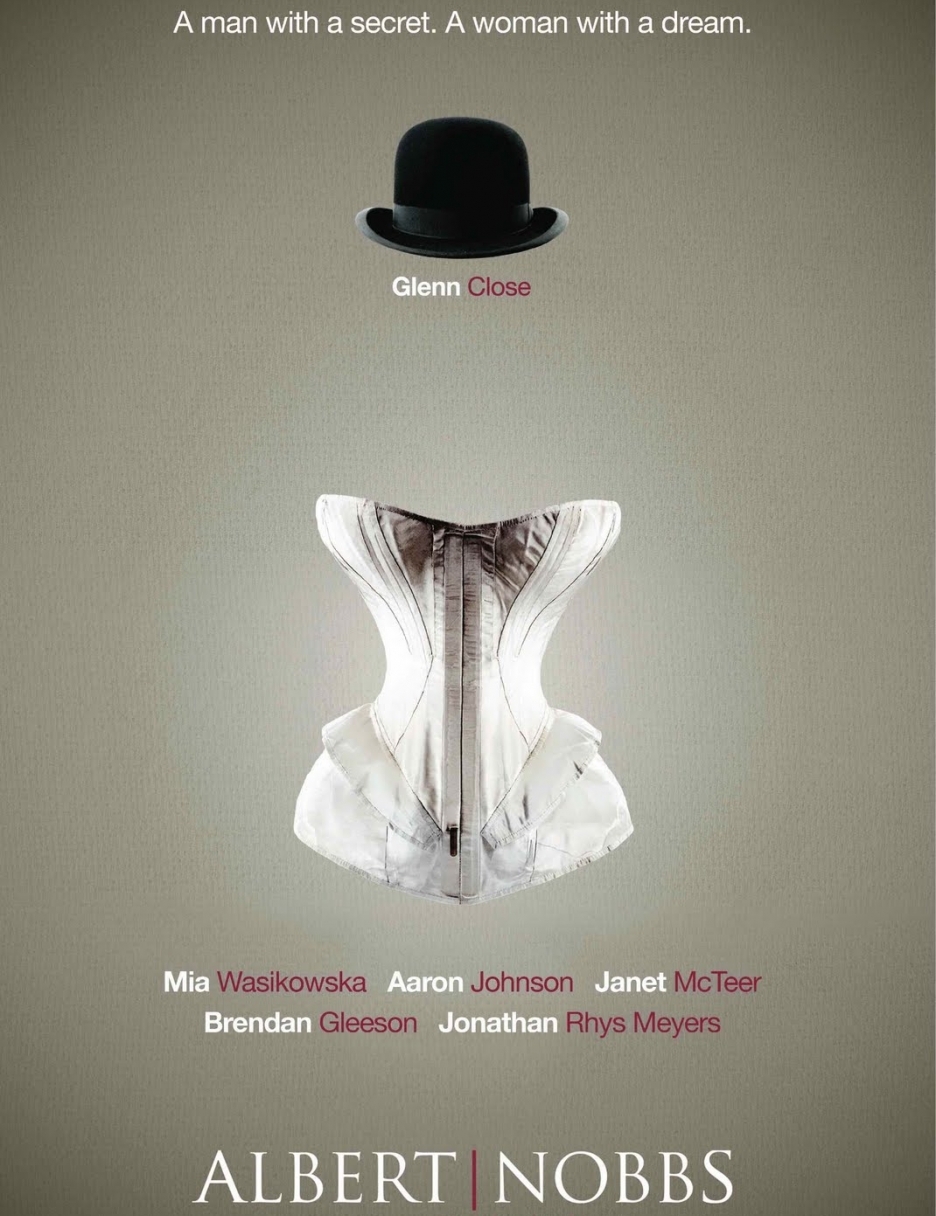 Absolutely. Things are changing a little bit. This year was kind of wild. Albert Nobbs, which I don’t know if that was depicting someone who is transgender, or whether it’s depicting a time when a woman was forced by circumstances to adopt another persona — one which he is or isn’t willingly embracing. I think the film was, for me at least, a bit unclear about the extent to which, all things being equal, this is where Albert would have ended up. The ‘T’ at the end of LGBT, in some ways it’s understandable that it falls into a different category. Because if you think about it, the LGB part of that acronym has to do with who you are attracted to. The T part has to do with who you are. It’s not necessarily who you are attracted to. Although, that may or may not be a factor in ones gender expression. It’s really not about who you wanna sleep with. It’s more about who you wanna sleep as. So in some ways, there is a significant difference. But I think that ultimately the T community has a lot more in common with the LGB community, and we all need to fall under the same umbrella for that reason. And actually, if we just forget for a second about who is sleeping with who, and who wants to sleep with whom, I think that in terms of how we are seen by people who aren’t in the LGBT community, that it kind of doesn’t matter. I mean, we may be making this distinction between our sexual orientation and our gender identity as being two very distinct things. But when it comes to being ostracized or being
Absolutely. Things are changing a little bit. This year was kind of wild. Albert Nobbs, which I don’t know if that was depicting someone who is transgender, or whether it’s depicting a time when a woman was forced by circumstances to adopt another persona — one which he is or isn’t willingly embracing. I think the film was, for me at least, a bit unclear about the extent to which, all things being equal, this is where Albert would have ended up. The ‘T’ at the end of LGBT, in some ways it’s understandable that it falls into a different category. Because if you think about it, the LGB part of that acronym has to do with who you are attracted to. The T part has to do with who you are. It’s not necessarily who you are attracted to. Although, that may or may not be a factor in ones gender expression. It’s really not about who you wanna sleep with. It’s more about who you wanna sleep as. So in some ways, there is a significant difference. But I think that ultimately the T community has a lot more in common with the LGB community, and we all need to fall under the same umbrella for that reason. And actually, if we just forget for a second about who is sleeping with who, and who wants to sleep with whom, I think that in terms of how we are seen by people who aren’t in the LGBT community, that it kind of doesn’t matter. I mean, we may be making this distinction between our sexual orientation and our gender identity as being two very distinct things. But when it comes to being ostracized or being 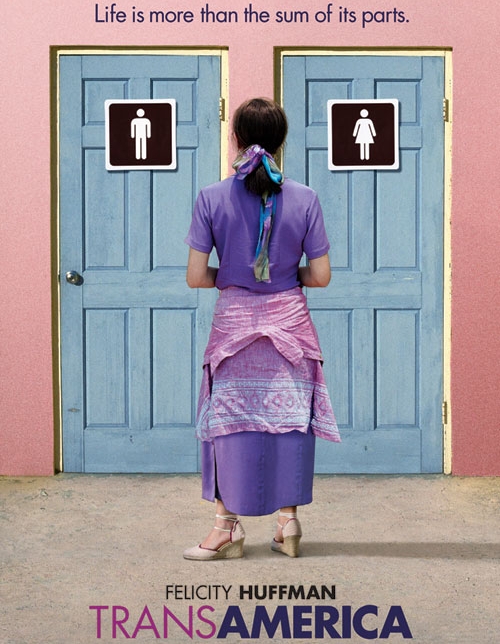 discriminated against, or all of the things that the LGBT community has to ally against — when it comes to those issues the people who are being discriminatory, the people who are bullying, the people who are ostracizing — those people are the ones who are really blending gender identity and sexual orientation together, so that an accusation talking about someone’s sexual orientation ends up coming out as some clumsy accusation like, “You’re a woman.” These things get all mixed and matched. They kind of become the same thing. So that’s what we really need to ally against, I think. And I think we’re making progress. I think that Prodigal Sons shows progress is being made just within the context of my family, and this one setting. It shows that things can go right sometimes. But I think it’s also important to realize that it doesn’t always go right. In fact, it’s much more common for trans people to be discriminated against. You know, half of trans kids attempt suicide. Half. I can’t even wrap my head around that figure. It’s just horrendous. And as hard as it is for the LGB part of that equation, I think that we’re making a lot of progress. For the T part of the equation, I think we’re making a bit of progress, but we have a lot further to go. So I just hope that with my films, with my storytelling, and with being out in the public eye a bit, I hope to just take as many steps as I can in
discriminated against, or all of the things that the LGBT community has to ally against — when it comes to those issues the people who are being discriminatory, the people who are bullying, the people who are ostracizing — those people are the ones who are really blending gender identity and sexual orientation together, so that an accusation talking about someone’s sexual orientation ends up coming out as some clumsy accusation like, “You’re a woman.” These things get all mixed and matched. They kind of become the same thing. So that’s what we really need to ally against, I think. And I think we’re making progress. I think that Prodigal Sons shows progress is being made just within the context of my family, and this one setting. It shows that things can go right sometimes. But I think it’s also important to realize that it doesn’t always go right. In fact, it’s much more common for trans people to be discriminated against. You know, half of trans kids attempt suicide. Half. I can’t even wrap my head around that figure. It’s just horrendous. And as hard as it is for the LGB part of that equation, I think that we’re making a lot of progress. For the T part of the equation, I think we’re making a bit of progress, but we have a lot further to go. So I just hope that with my films, with my storytelling, and with being out in the public eye a bit, I hope to just take as many steps as I can in 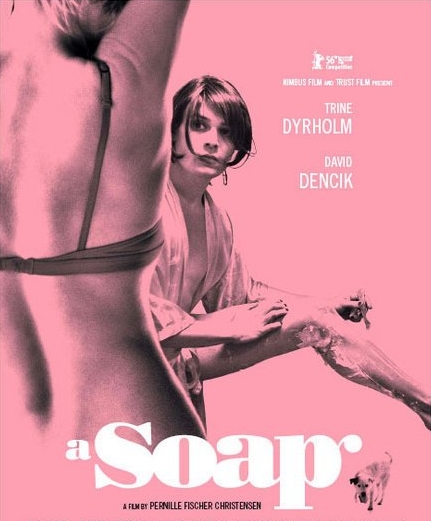 demystifying it, which I think is a big part of it. Just giving people someone to feel like they know a bit about this person, and can start to wrap their heads around the idea, so it’s not just such a big deal. That’s just how I’m hoping to role that rock down the road a little bit further. Prodigal Sons is really constructed in a way that you’re introduced to me as being trans. And then what I think happens, what is intended and what a lot of people confirm, is that it’s really not too long before you forget about what in a lot of films would be the story. That’s what this whole adventure is about. And it’s very important to me that that not be the only issue going on in this film — that that issue disappears. And once that disappears and people forget that, “Oh, this is this trans person,” and once audiences can affiliate with a trans character on a much deeper level that has to do with humanitarian issues, when they forget about this label that was stamped on my forehead in the first act as it were — I think that’s the point when people have forgotten that label, and you can really get audiences to experience what the word “sympathy” literally means. The same feelings, the same emotions as this character whose
demystifying it, which I think is a big part of it. Just giving people someone to feel like they know a bit about this person, and can start to wrap their heads around the idea, so it’s not just such a big deal. That’s just how I’m hoping to role that rock down the road a little bit further. Prodigal Sons is really constructed in a way that you’re introduced to me as being trans. And then what I think happens, what is intended and what a lot of people confirm, is that it’s really not too long before you forget about what in a lot of films would be the story. That’s what this whole adventure is about. And it’s very important to me that that not be the only issue going on in this film — that that issue disappears. And once that disappears and people forget that, “Oh, this is this trans person,” and once audiences can affiliate with a trans character on a much deeper level that has to do with humanitarian issues, when they forget about this label that was stamped on my forehead in the first act as it were — I think that’s the point when people have forgotten that label, and you can really get audiences to experience what the word “sympathy” literally means. The same feelings, the same emotions as this character whose 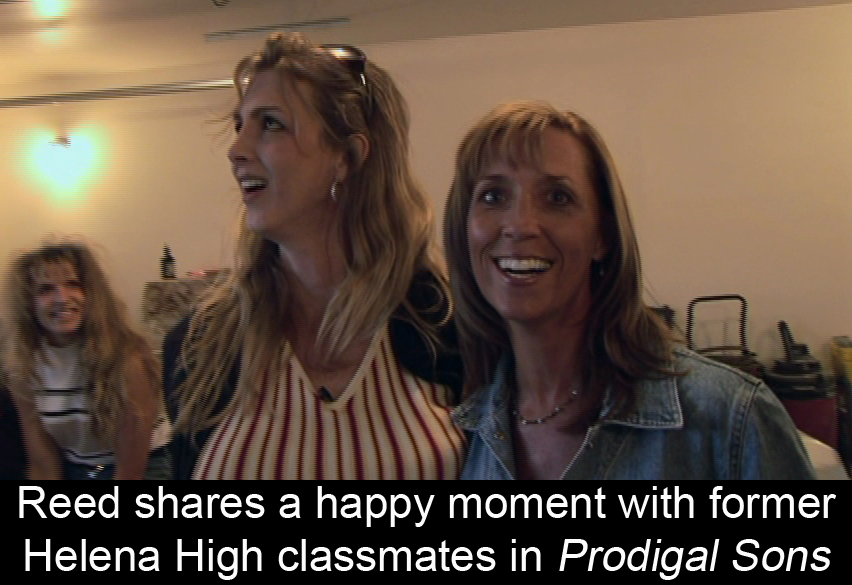 story you’re listening to. That’s the point when you can really push that rock down the road. Other people have ways of doing it politically. Other people have ways of doing it with the work that they’re doing. The best way I know is to tell stories, and enroll people in those stories. Then let all of the issues fall out of this close identification with this character whose story you’ve just been enrolled in. Let the politics fall out of that, and kind of work backwards into it. But I think in the end, all of those methods are necessary. I’ve just seen so many times where all people really needed was to meet someone who was gay, or lesbian, or bi, or trans. Then you get to just demystify a lot of the preconceptions that they had about what these labels meant. I’ve seen it happen again, and again, and again. And now that more people are meeting more LGB people, we’re making a bit of progress. We’ve got a ways to go, of course, especially with kids and bullying. All of that stuff is just really important to focus on youth now, I think. I’m on the board of GLSEN: Gay, Lesbian & Straight Education Network. The reason I’m on that board is because I feel like dealing with prejudice at a young age is kind of where we’re moving now, and I hope that all facets of our society can start to handle that ‘T’ at the end of LGBT a little bit better.
story you’re listening to. That’s the point when you can really push that rock down the road. Other people have ways of doing it politically. Other people have ways of doing it with the work that they’re doing. The best way I know is to tell stories, and enroll people in those stories. Then let all of the issues fall out of this close identification with this character whose story you’ve just been enrolled in. Let the politics fall out of that, and kind of work backwards into it. But I think in the end, all of those methods are necessary. I’ve just seen so many times where all people really needed was to meet someone who was gay, or lesbian, or bi, or trans. Then you get to just demystify a lot of the preconceptions that they had about what these labels meant. I’ve seen it happen again, and again, and again. And now that more people are meeting more LGB people, we’re making a bit of progress. We’ve got a ways to go, of course, especially with kids and bullying. All of that stuff is just really important to focus on youth now, I think. I’m on the board of GLSEN: Gay, Lesbian & Straight Education Network. The reason I’m on that board is because I feel like dealing with prejudice at a young age is kind of where we’re moving now, and I hope that all facets of our society can start to handle that ‘T’ at the end of LGBT a little bit better.